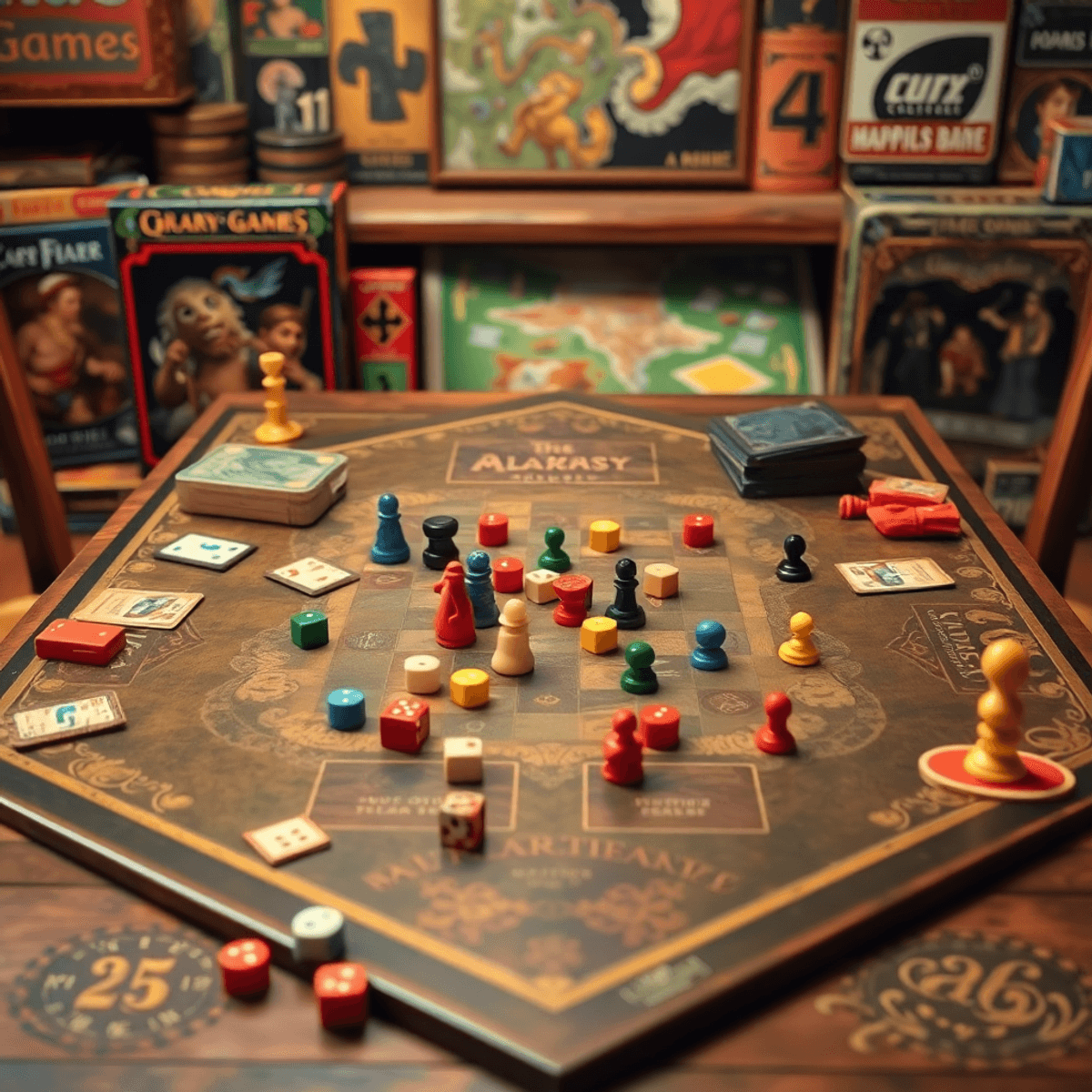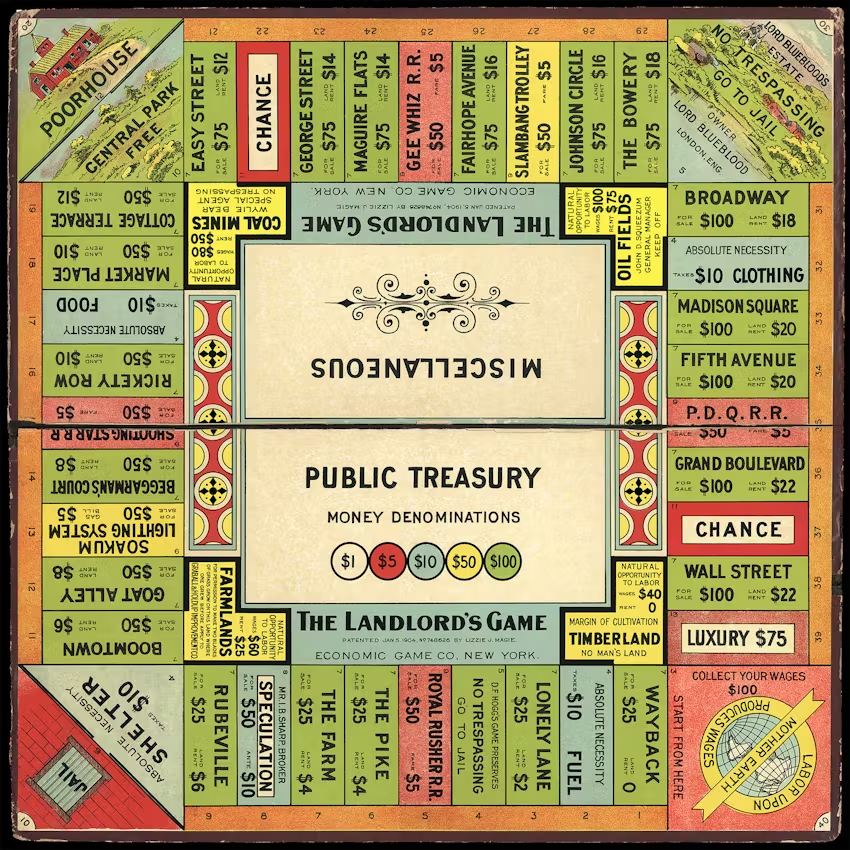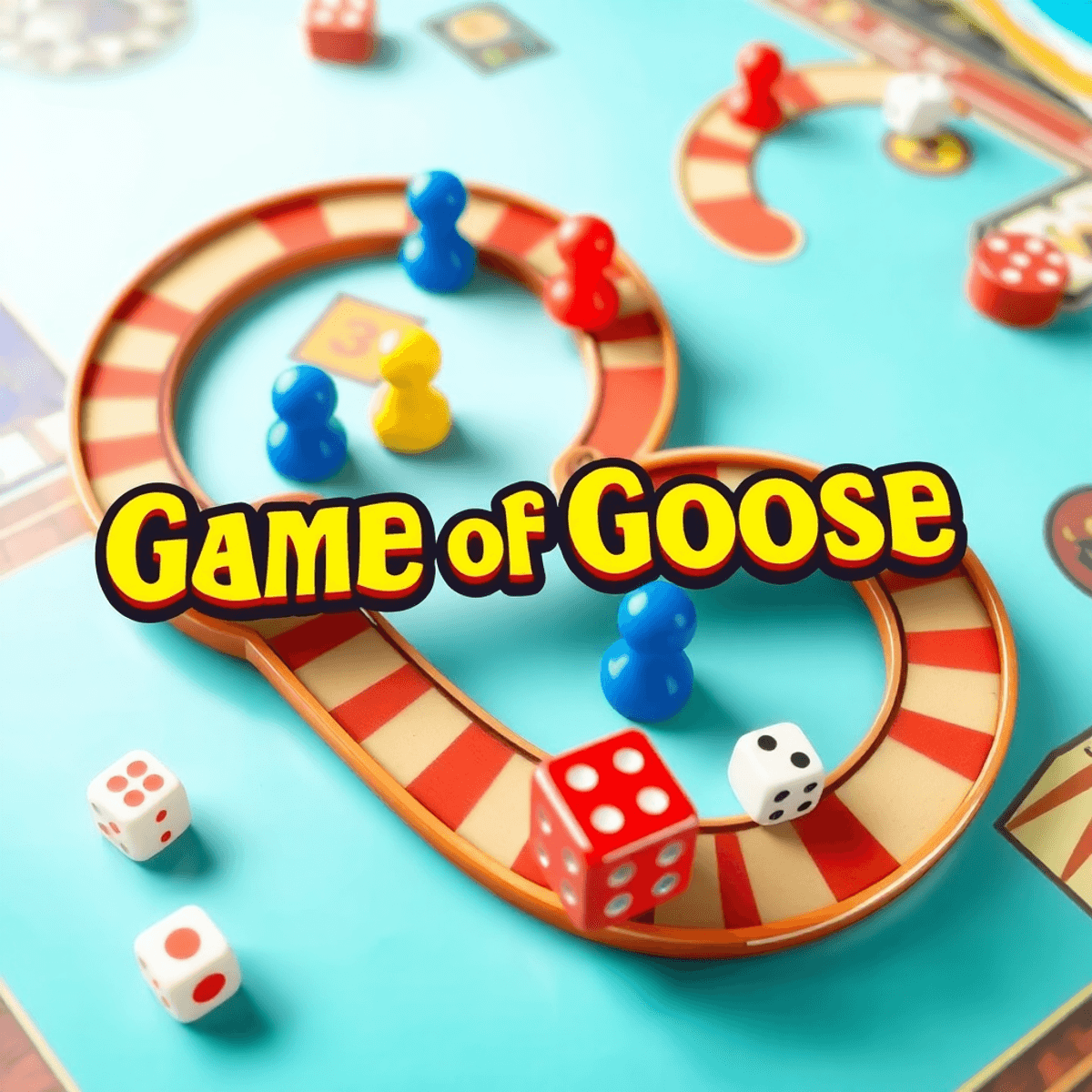
Every popular modern board game has older games that influenced it, even if those older games are now forgotten. These lesser-known games, which may not be widely known or are no longer being produced, played a crucial role in shaping the groundbreaking mechanics and innovative design methods that define today’s gaming.
In this article, we will explore these lesser-known or forgotten board games and their impact on modern board game design. We’ll examine how their unique gameplay mechanics, storytelling techniques, and design innovations have paved the way for the games we love today.
By understanding the history behind our favorite tabletop experiences, we can gain a deeper appreciation for the creativity and ingenuity that continues to drive the industry forward. Join us as we delve into the world of forgotten predecessors and discover the hidden treasures that shaped contemporary gaming.
The Evolution of Board Game Mechanics
Game mechanics are the basic elements that determine how players interact with a board game. These sets of rules and procedures establish the foundation for making strategic decisions, keeping players engaged, and creating meaningful gameplay experiences.
Core Mechanical Innovations Through History:
- Worker Placement – This mechanic originated from games like Caylus (2005) and evolved from ancient games where players strategically positioned pieces for advantage. Early implementations included simple placement systems in games like Keydom (1998).
- Resource Management – This mechanic has its roots in trading games from ancient Mesopotamia and was revitalized in titles like The Landlord’s Game (1904), which later became Monopoly.

- Area Control – Ancient games such as Go introduced mechanics for territorial conquest, influencing modern classics like Risk and Twilight Imperium.
The evolution of these core mechanics reflects broader shifts in game design philosophy:
- Complexity Integration – Combining simple mechanics to create more intricate strategic layers
- Player Agency – Placing greater emphasis on meaningful choices instead of relying on luck
- Mechanical Synergy – Different systems working together harmoniously to create captivating gameplay loops
Modern designers are still pushing boundaries by remixing these foundational mechanics. For instance, games like Agricola combine worker placement with resource management, while Scythe merges area control with engine building to offer unique gaming experiences.
These mechanical evolutions highlight how timeless game design principles continue to influence contemporary board gaming experiences. The essence of ancient games can be found in today’s most groundbreaking titles, proving that effective mechanics have enduring appeal.
The Role of History in Board Game Design
Historical board games serve as powerful bridges between entertainment and education, transforming abstract historical concepts into tangible experiences. Games like “The Royal Society” immerse players in the intellectual ferment of 17th-century England, where they take on roles as natural philosophers conducting experiments and sharing discoveries.
The integration of historical narratives in board games creates unique learning opportunities:
- Authentic Decision-Making: Players face similar choices and challenges as historical figures
- Cultural Context: Game mechanics reflect period-specific social structures and values
- Resource Management: Understanding historical economies through gameplay systems
- Social Dynamics: Experiencing power relationships and political tensions of different eras
Dr. Tim Somers’ research on educational gaming demonstrates how historical board games enhance retention of historical facts through active engagement. Players absorb information about past events while making strategic decisions, creating lasting connections to historical content.
Obscure historical games often capture fascinating moments in time. The 1960s game “Freedom: The Underground Railroad” tackles complex historical themes through cooperative gameplay, while the lesser-known “Founding Fathers” (1976) illuminates the intricacies of early American politics.
Recent designs have expanded beyond Western perspectives. “Pax Pamir” examines the Great Game in Central Asia through local eyes, challenging traditional Eurocentric narratives. This shift toward diverse historical representations enriches the gaming landscape and provides players with nuanced understanding of global history.
The success of historically-themed games demonstrates players’ appetite for meaningful engagement with the past. These games create interactive historical narratives that complement traditional learning methods while maintaining engaging gameplay mechanics.
The Evolution of Board Games: Embracing Diversity
The world of board games has experienced an incredible change. Instead of focusing solely on traditional stories of conquest and domination, many modern games now offer immersive and inclusive storytelling experiences. This shift reflects a growing understanding of the importance of representing diverse voices in the gaming industry.
Challenging Old Narratives
Today’s game creators are breaking away from conventional storytelling and exploring themes that have often been overlooked. For example, Spirit Island flips the script on colonial narratives by placing players in the role of nature spirits defending their island from invaders. By subverting traditional conquest stories, these games challenge our understanding of history and offer new perspectives.
Redefining Competition
The emergence of cooperative storytelling games marks a significant departure from competitive gameplay models. Tales of the Arabian Nights was one of the first to introduce this concept, paving the way for modern titles like TIME Stories and T.I.M.E Stories Revolution. Unlike traditional games where players compete against each other, these titles prioritize shared narrative experiences over individual victories.
Authentic Cultural Representation
Game designers today are making a conscious effort to include genuine cultural elements in their creations:
- Senet, an ancient Egyptian game, has inspired contemporary abstract strategy games.
- Pax Pamir explores the political struggles of Afghanistan during the Great Game.
- Wingspan highlights the theme of nature conservation led by female scientists.
Enriching Player Experience
This diversification in game design has opened up new avenues for players to connect with board games:
- Enhanced empathy through role-playing different perspectives
- Deeper understanding of varied cultural experiences
- Increased accessibility for different player groups
- Richer storytelling possibilities through collaborative play
The integration of diverse narratives has not only expanded creative possibilities but also led to innovative mechanics that support these new storytelling approaches. For instance, Root showcases how asymmetric gameplay can represent multiple viewpoints within a single gaming experience.
As we continue to embrace diversity in board gaming, it is essential to recognize its impact on both players and designers alike. By fostering inclusivity through representation, we can create a more vibrant and interconnected gaming community.
The Influence of Eurogames on Modern Design Trends
The 1990s marked a revolutionary shift in board game design with the emergence of Eurogames, a genre that redefined strategic tabletop gaming. These games, originating primarily from Germany and other European countries, introduced a distinctive design philosophy centered on:
- Strategic depth over chance
- Indirect player competition
- Economic resource management
- Elegant mechanics with minimal randomness
- Short to medium play duration
Settlers of Catan, released in 1995, exemplifies the core principles of Eurogame design. Its innovative mechanics blend resource management, negotiation, and strategic placement while maintaining accessibility for new players. This balance became a blueprint for countless modern games.
The Eurogame influence rippled through the industry, inspiring design elements now considered standard:
Mechanical Innovation
- Worker placement systems
- Point salad scoring
- Engine building mechanics
- Variable player powers
Design Philosophy
- Clean, streamlined rulebooks
- Catch-up mechanisms for trailing players
- Multiple paths to victory
- Limited direct conflict
Modern designers have embraced these principles while adding their own innovations. Games like Wingspan demonstrate how Eurogame mechanics can merge with rich thematic elements, creating experiences that satisfy both strategic and narrative desires.
The “German-style” approach to game design has pushed the industry toward more sophisticated gameplay systems. Contemporary titles now regularly feature intricate economic models, complex interaction patterns, and deep strategic choices – all while maintaining the accessibility that made Eurogames revolutionary.
Prototyping, Playtesting, and Iteration: The Game Development Process Today
The way board games are developed has changed over time. Instead of designers working alone, they now collaborate with others and use data to guide their decisions. Today’s game creators understand that in order to create a successful game, they need to put it through rigorous testing and make improvements based on feedback.
The Power of Prototyping
Prototyping is an essential part of the game development process. It allows designers to quickly test out their ideas and make necessary changes before investing too much time or money into a project. Here are some key benefits of prototyping:
- Quick Testing: Paper prototypes enable designers to test core mechanics quickly without spending too much on production costs.
- Identifying Flaws Early: Early-stage testing helps identify fundamental flaws in the game design before significant investment is made.
- Rapid Iteration: Digital prototyping tools allow for rapid iteration and remote playtesting, making it easier to gather feedback from different players.
- Revolutionizing Testing: Platforms like Tabletop Simulator have revolutionized the testing process by providing a virtual space for designers to playtest their games with others.
Diverse Playtesting Groups
Game developers now recognize the importance of getting feedback from a wide range of players. By including diverse demographics in their playtesting groups, they can gain valuable insights that will help them improve their games. Some key factors that developers consider when selecting playtesters include:
- Different age groups
- Cultural backgrounds
- Gaming experience levels
- Physical accessibility needs
This inclusive approach has led to several innovations in board game design, such as:
- Color-blind friendly components
- Adjustable difficulty settings
- Multiple paths to victory
- Culturally sensitive themes
The Game Crafter platform exemplifies modern prototyping capabilities, enabling designers to create professional-quality test copies. Companies like Breaking Games have established structured playtesting programs, gathering data from hundreds of players before publication.
Iteration Cycles
After gathering feedback from playtests, game developers go through several iteration cycles to make improvements based on the input received. These cycles typically involve:
- Initial concept testing
- Mechanics refinement
- Component optimization
- Rules clarity verification
- Balance adjustments
Research shows that games undergoing extensive playtesting phases achieve higher BoardGameGeek ratings and longer market sustainability. This systematic approach ensures that when titles reach store shelves, they’re polished, balanced, and ready for diverse player groups.
Legacy Games: Influences Behind Popular Titles We Love Today
The DNA of modern board games can be traced back to influential titles that pioneered mechanics and themes we now take for granted. These forgotten predecessors laid the groundwork for many beloved contemporary games.
Economic Strategy Origins
Acquire (1964) established core mechanics that would later influence economic strategy games like Brass: Birmingham and Power Grid. Its stock market manipulation and tile placement systems created a blueprint for business simulation games.
Hidden Movement Evolution
Scotland Yard (1983) introduced the revolutionary one-versus-many hidden movement mechanic. This system directly inspired modern hits like Letters from Whitechapel and Fury of Dracula.
Deck-Building Foundations
Before Dominion popularized deck-building in 2008, Titan: The Arena (1997) experimented with card drafting mechanics. Its influence can be seen in:
Area Control Innovations
Divine Right (1979) developed sophisticated area control mechanics that would later shape:
- Twilight Imperium
- Risk Legacy
- Modern war games
Cooperative Gaming Roots
Freedom in the Galaxy (1979) pioneered cooperative elements years before they became mainstream. Its collaborative mechanics influenced modern cooperative games like
Conclusion
Board gaming has a rich history filled with many forgotten board games just waiting to be discovered again. These forgotten games laid the foundation for the mechanics, themes, and innovative designs we love in today’s classics.
By exploring older titles, players can gain a deeper appreciation for:
- The elegant simplicity of early worker placement systems
- Groundbreaking resource management mechanics
- Pioneering approaches to cooperative gameplay
- Revolutionary storytelling techniques
The future of board gaming is built on this foundation while pushing creative boundaries. Modern designers are inspired by these historical innovations and are reimagining them for contemporary audiences.
We invite you to become a board game archaeologist. Look for these influential predecessors at local game stores, conventions, or online communities. Each time you play these games, you connect with gaming’s evolutionary chain and enhance your understanding of beloved modern titles.
The next time you sit down to play your favorite game, remember – you’re experiencing the result of decades of creative innovation, carefully preserved and transformed through generations of passionate game designers.


